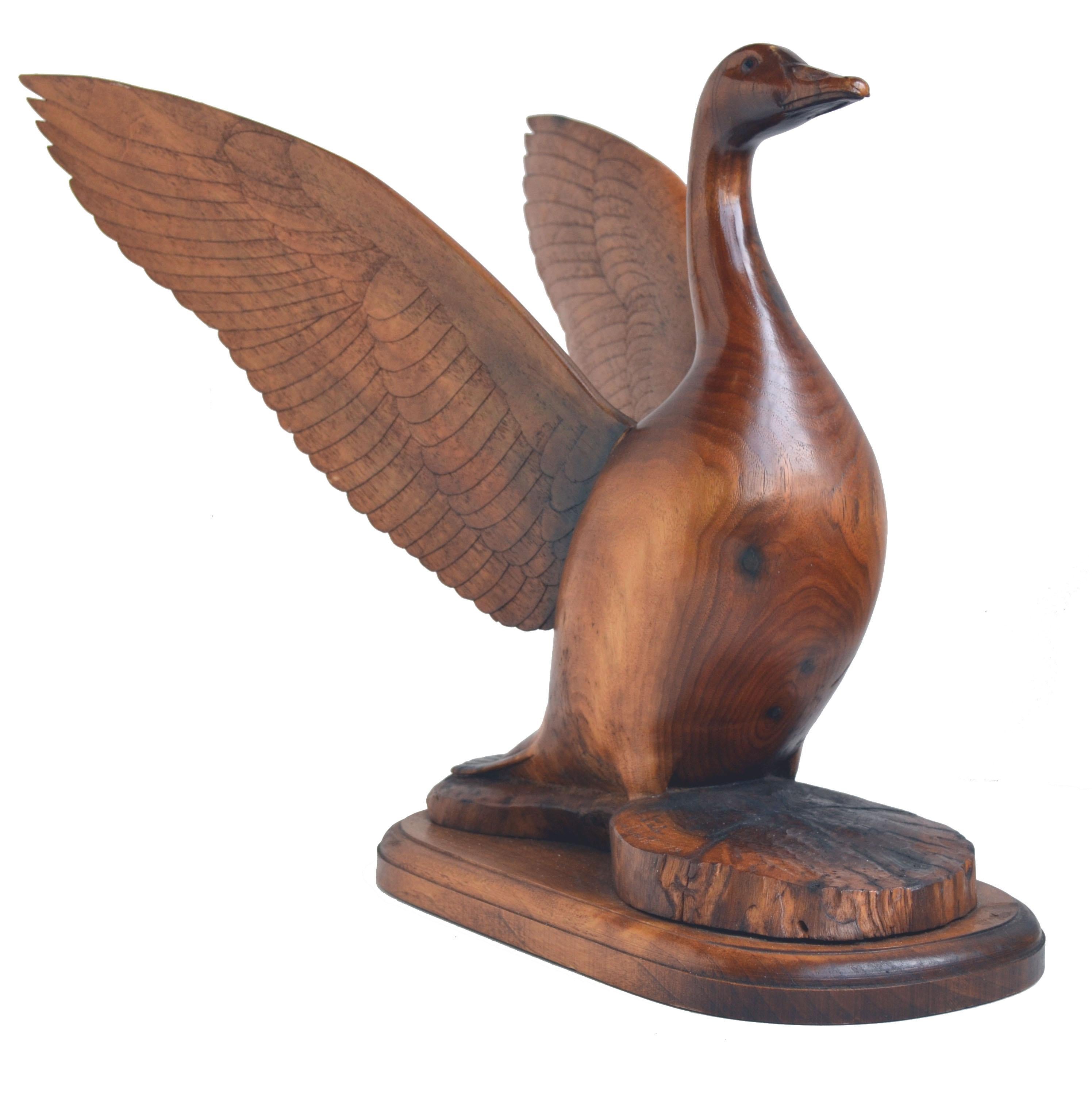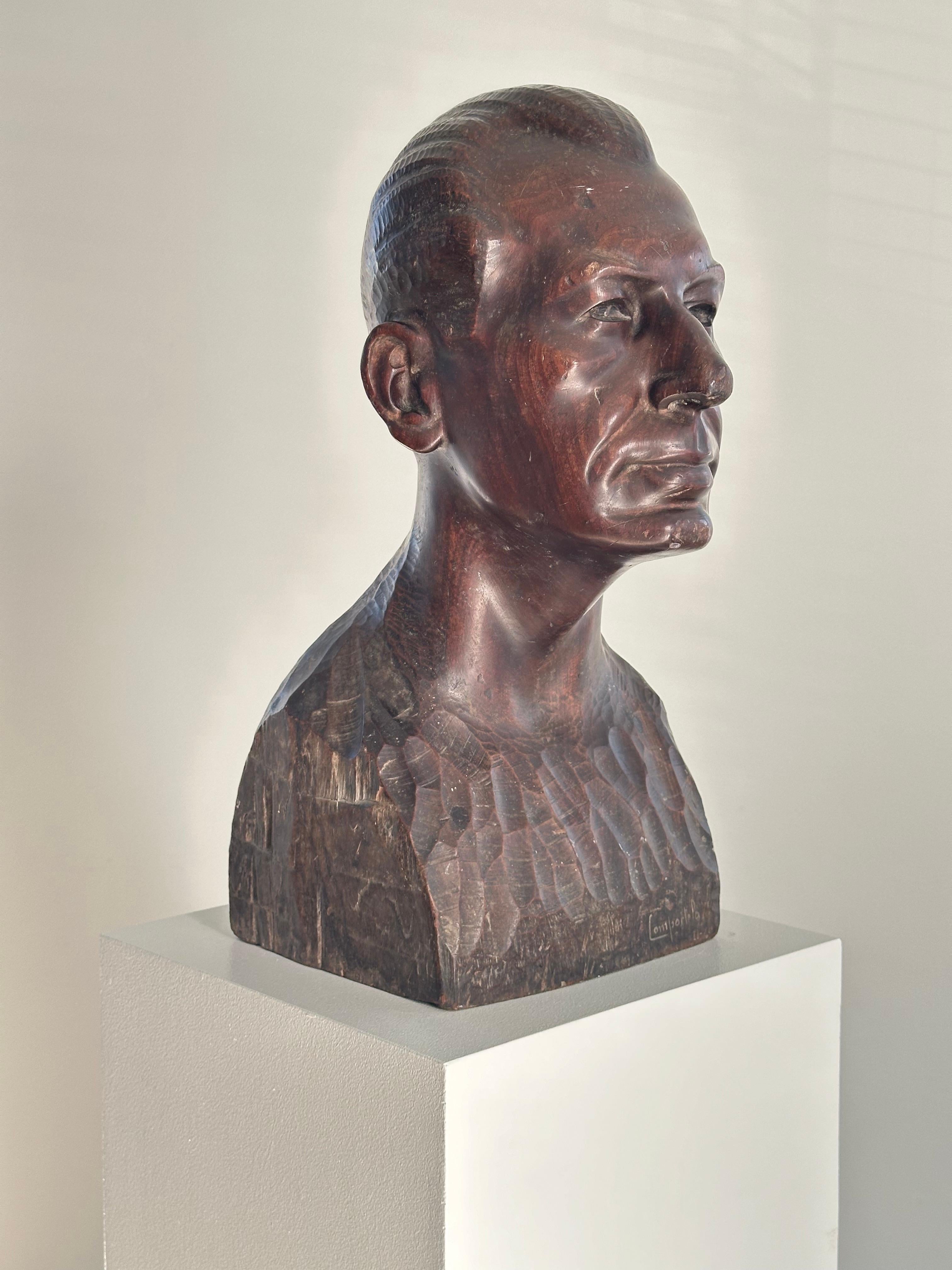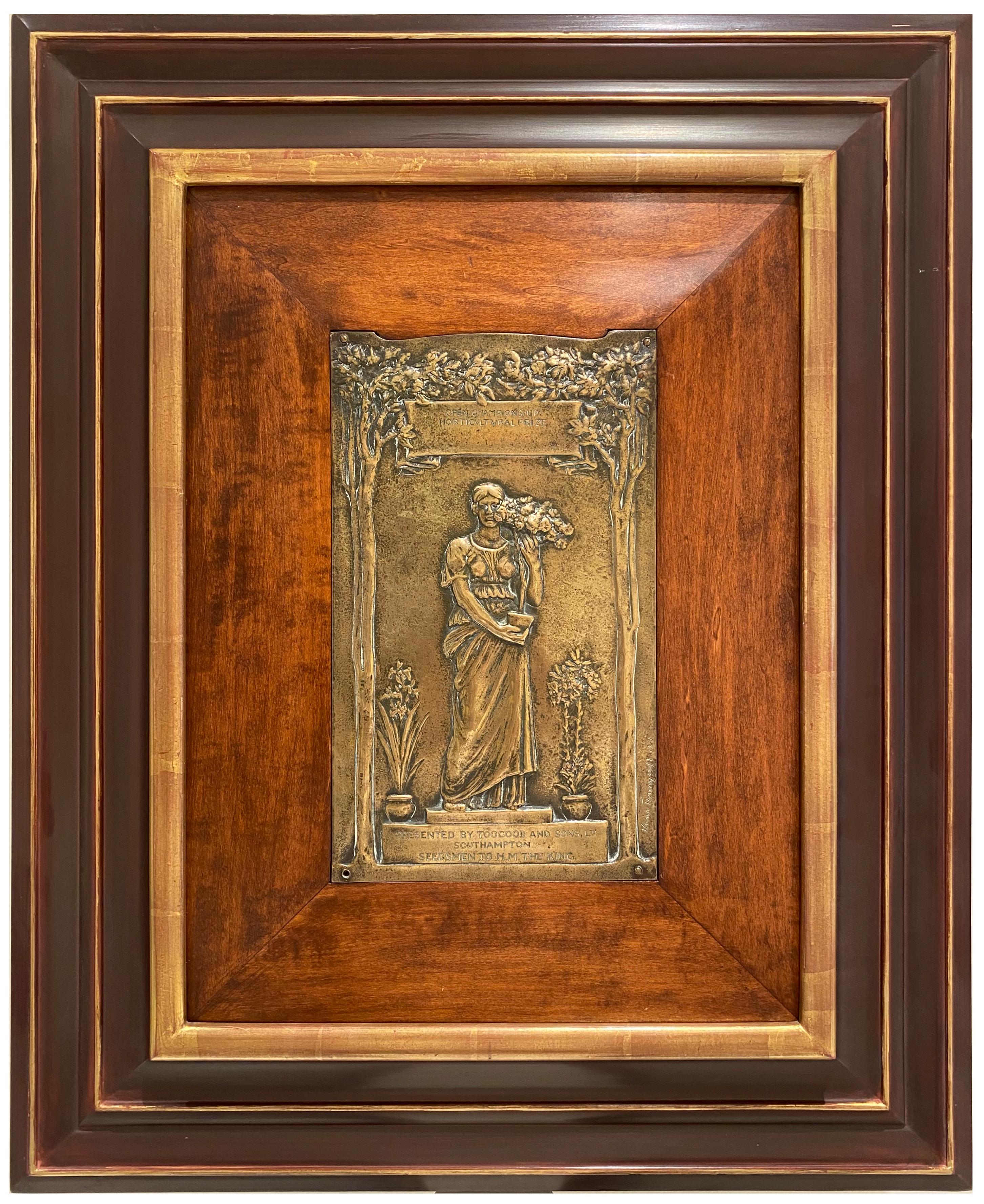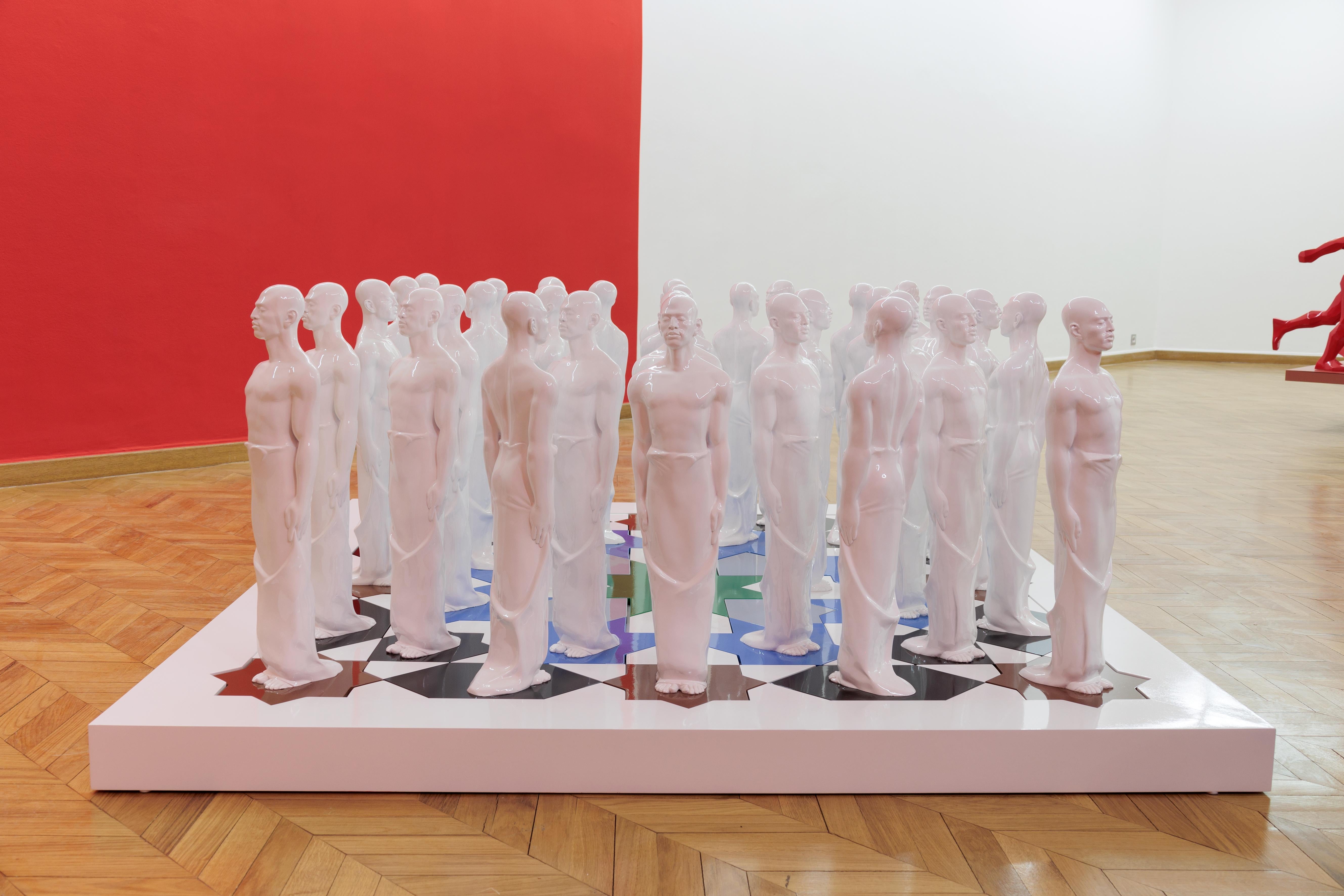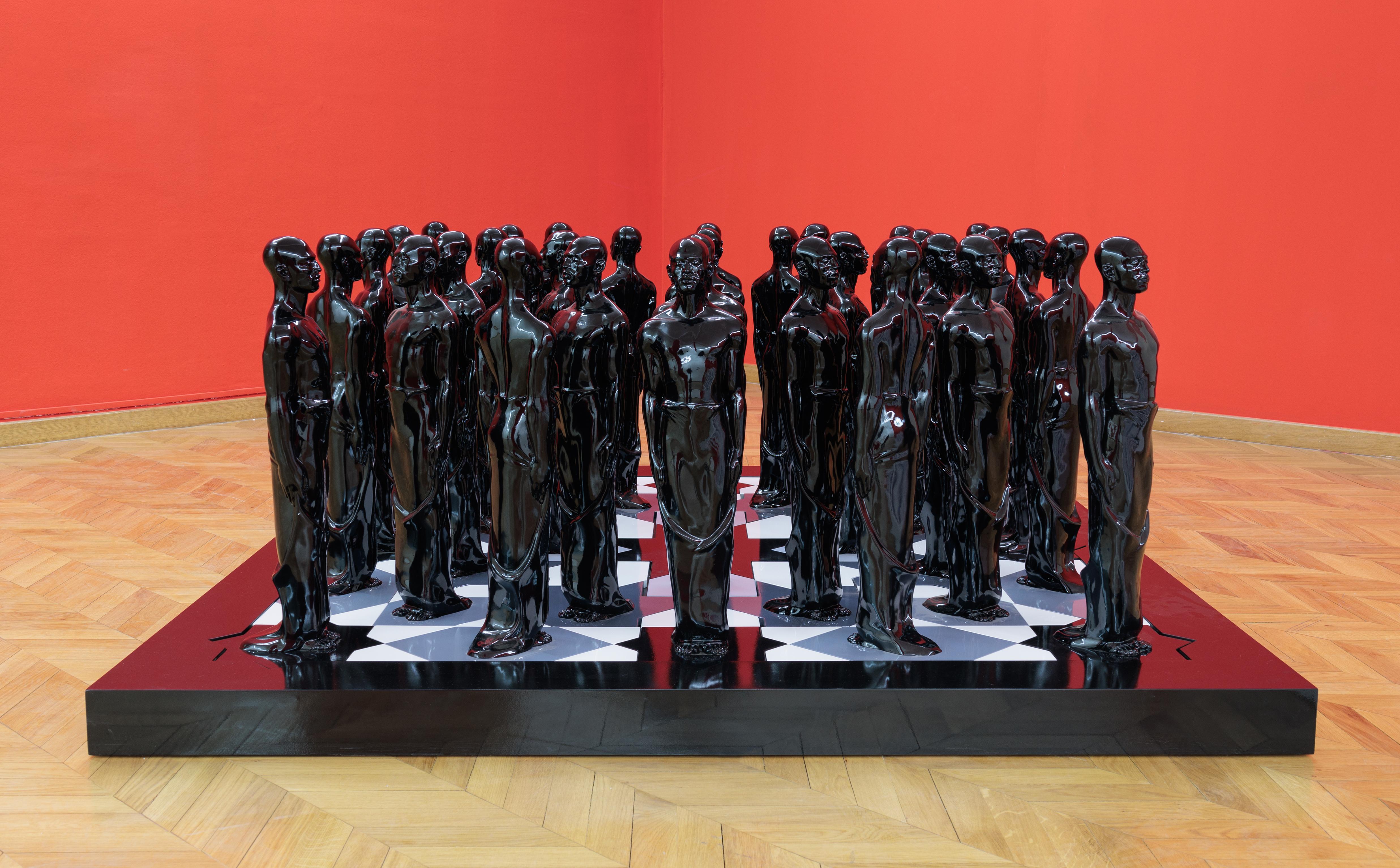Items Similar to Large Neapolitan 19th Century Hardwood Sculpture of a Crèche Camel.
Video Loading
Want more images or videos?
Request additional images or videos from the seller
1 of 22
UnknownLarge Neapolitan 19th Century Hardwood Sculpture of a Crèche Camel.1890s
1890s
About the Item
Large, Neapolitan, late 19th Century hardwood sculpture of a camel. Artist unknown.
A beautifully patinated hardwood sculpture. The sculpture is extremely charming and having been handled for over a century has a lovely warm and tactile patina. It is particularly nice too see the work of the craftsperson in the adze and chisel marks along the body of the sculpture. The Italians and most notably the area around Naples has a long and storied tradition in the creation of sculptures for Nativity Scenes. This camel is both an endearing item and a piece of social history.
A wonderful addition in its own right to the traditional Christmas scene, by tradition this sculpture was used as a maquette for the production of papier-maché models used in Christmas Creches which have such a long tradition in Italy and throughout the world. Wonderfully carved this piece was used to create hollow models out of papier-maché which were more affordable for this Christmas tradition. Hundreds of strips of papier-maché would be layered onto the figure in all directions. Then using a sharp tool the papier-maché was pushed into all the crevices of the sculpture to give it crisp detail. Once the layers of paper were dry the papier-maché was cut at certain points and lifted off the sculpture. Then finally the resulting body parts were glued back together, painted and patinated ready to be placed in the crèche scene.
In the Christian tradition, a nativity scene (also known as a manger scene, cribor, crèche, or in Italian presepio or presepe, or Bethlehem) is the special exhibition, particularly during the Christmas season, of art objects representing the birth of Jesus.
Other characters from the nativity story, such as shepherds, sheep, and angels may be displayed near the manger, as described in the Gospel of Luke. A donkey and an ox are typically depicted in the scene, and the Magi and their camels, described in the Gospel of Matthew, are also included. Many also include a representation of the Star of Bethlehem. Several cultures add other characters and objects that may or may not be Biblical.
Saint Francis of Assisi is credited with creating the first live nativity scene in 1223 in order to cultivate the worship of Christ. He himself had recently been inspired by his visit to the Holy Land, where he'd been shown Jesus' traditional birthplace. The scene's popularity inspired communities throughout Christian countries to stage similar exhibitions.
- Creation Year:1890s
- Dimensions:Height: 20.08 in (51 cm)Width: 19.3 in (49 cm)Depth: 5.52 in (14 cm)
- Medium:
- Movement & Style:
- Period:
- Condition:Areas of old glue on the saddle. Some cracking commensurate with age.
- Gallery Location:Cotignac, FR
- Reference Number:
About the Seller
5.0
Platinum Seller
These expertly vetted sellers are 1stDibs' most experienced sellers and are rated highest by our customers.
Established in 2000
1stDibs seller since 2020
171 sales on 1stDibs
Typical response time: 1 hour
- ShippingRetrieving quote...Ships From: Cotignac, France
- Return PolicyA return for this item may be initiated within 3 days of delivery.
More From This SellerView All
- Moi, Flags, Cats and Poppies, Very Large Scale Mixed Media 'Assemblage'By Armand AvrilLocated in Cotignac, FRImposing and very large scale mixed media 'assemblage' by French artist Armand Avril. The work includes the French tricolour flag, figures and heads in various poses, his symbolic cat sculptures and large stylised poppies. The work is not signed but comes with a certificate of authenticity from the artist. This montage fully demonstrates Avril's inspiration drawn from tribal art whilst also expressing the humour and joy that he puts into all his work. A very strong sculptural image and a feast for the eyes in searching for and recognising the everyday objects used in making this piece come alive. This montage is made from wood pieces, bottle tops, string, paint, cork, nails buttons, clothes pegs and netting. The more sculpted areas of the piece stand out up to 4cm from the frame. Armand Avril was born in 1926 in Lyon. His father, Marcel Avril was a painter and collector of African art. At 16 Armand became an apprentice shepherd in Provence. Avril could always be seen equipped with a sketchbook and a book on the history of art whilst tending his flock. It was not until the age of 30, in 1956, that Armand embarked on painting as an autodidact, influenced by Raoul Dufy, Pierre Bonnard, Henri Matisse and the Lyonnaise School of Painting. He exhibited for the first time in 1957. In 1960, he left for a one-year trip to Africa. There he met the painter Jean Arène who introduced him to the village of Cotignac in the Var and to Louis Pons...Category
Late 20th Century Tribal Mixed Media
MaterialsMetal
- 'Femme Assise'. Large Mixed-media Montage on Board.By Armand AvrilLocated in Cotignac, FRImposing and very large scale mixed media 'assemblage' by French artist Armand Avril. The work includes the French tricolour flag colours, his symbolic cat sculptures and a highly colourful geometric image of the artist's mother sitting in a chair. The work is signed and dated to the reverse and comes with a certificate of authenticity from the gallery. This montage fully demonstrates Avril's geometric period whilst also expressing the humour and joy that he puts into all his work. A very strong sculptural image and a feast for the eyes in searching for and recognising the everyday objects used in making this piece come alive. This montage is made from wood pieces, plywood, oil paint, acrylic, bottle top and nails . The more sculpted areas of the piece stand out up to 3cm from the frame. Armand Avril was born in 1926 in Lyon. His father, Marcel Avril was a painter and collector of African art. At 16 Armand became an apprentice shepherd in Provence. Avril could always be seen equipped with a sketchbook and a book on the history of art whilst tending his flock. It was not until the age of 30, in 1956, that Armand embarked on painting as an autodidact, influenced by Raoul Dufy, Pierre Bonnard, Henri Matisse and the Lyonnaise School of Painting. He exhibited for the first time in 1957. In 1960, he left for a one-year trip to Africa. There he met the painter Jean Arène who introduced him to the village of Cotignac in the Var and to Louis Pons...Category
Late 20th Century Abstract Expressionist Mixed Media
MaterialsWood, Plywood, Acrylic, Board
- Statue Songye, Republic of Congo, Misangu Glass Beads & Chiefly Raffia SkirtLocated in Cotignac, FRA Songye Male Power Figure, Democratic Republic of the Congo, the male figure with openwork arms and hands resting on the abdomen, typical facial features and a waterbuck (kobus elli...Category
Mid-20th Century Tribal Figurative Sculptures
MaterialsMetal
- Mid Century Sgraffito, Saltimbanque and the Card Player, Circle of Picasso.Located in Cotignac, FRMid 20th Century sgraffito work on plaster by Jean Pierre de Cayeux. The work is signed and dated on the skirt of the card player, bottom right, and on the stretcher of the chair, bo...Category
Mid-20th Century Modern Figurative Sculptures
MaterialsEnamel
- A Large Scale, Beautifully Sculpted and Patinated Batcham Cameroon Mask.Located in Cotignac, FRA large scale and beautifully carved wooden ceremonial mask from Cameroon. There are traces of colour and decoration to the surface and the mask has a magnificent patina giving it a wonderful presence as a sculptural object. The Batcham Mask or simply the Batcham originated in western Cameroon although its name refers to the place where it was first found: Batcham. This is a ceremonial mask from the Bamileke culture in the western Grasslands of Cameroon. This tall crest (76 cm in height) has clearly defined features, a powerful yet calm visage, sharply chiselled diamond and triangular furrows, and nearly perfect symmetry. Such painstaking craftsmanship underscores the sophistication and control of the sculptor in preparing this ceremonial piece. It shares the elements of Batcham masks including: The general morphology is built on two axes: a symmetrical vertical axis with chiseled furrows, stylized eyes, lips, nostrils, mouth and teeth; a horizontal axis presenting swollen cheeks, an ovular mouth showing multiple teeth, and triangular ears supported on a hollow cylindrical base. One interpretation is that the masks depict a hippopotamus emerging from watery depths, conveying nature’s power conferred to enthroned royalty. The Batcham mask represents the pi, or double animal of a great dignitary of the kingdom. It was used by a great dignitary of the Msop society who intervened only on rare occasions: during the funeral and enthronement of the king and the nine notables, and to perform the Royal Tso dance, elephant dance...Category
20th Century Tribal Sculptures
MaterialsPaint, Plaster, Wood
- Native North American Hopi Katsina (Kachina) Doll.Located in Cotignac, FRNative North American carved wood and painted effigy figure, Hopi Katsina or Kachina doll. This is one of a group of eight dolls all individually priced, or available as a set, and ...Category
Mid-20th Century American Impressionist Figurative Sculptures
MaterialsWood, Paint
You May Also Like
- Wooden Maquette of a Leg, Hand Carved British SculptureLocated in London, GBHand-carved wooden trunk and plinth Height: 38 1/2 inches (98 cm) Width: 10 1/2 inches (27 cm) Lawson Rudge Lawson Rudge was born in 1936. He is...Category
20th Century Realist Figurative Sculptures
MaterialsWood
- Goose with Outstretched Wings Hand Carved SculptureLocated in Soquel, CAA beautiful, high polished sculpture of a goose with outstretched wings by Dale Eugene Schoth (American, 1925-1984). Appropriate to view in the round. Signed and dated by the artist "Dale Schoth '79" on the base. He was a carpenter and wood carver in Twin Falls Idaho. His grave stone...Category
1970s Realist Figurative Sculptures
MaterialsWood
- Portrait of a ManLocated in Wilton Manors, FLFrancisco Vazquez Diaz, known as Compostela (1898-1988). Portrait of a Man, 1949. Carved mahogany, measuring 18.75 inches h, 8.5 inches w, 11 in...Category
Mid-20th Century Realist Figurative Sculptures
MaterialsMahogany
- Horticulture, Garden Prize relief wall hangingLocated in Greenwich, CTA unique wall piece that is a great gift for any avid gardener or lover of horticulture. Sit Hamo Thornycroft would become one of the youngest members of the Royal Academy, achieve the Medal of Honour at the Paris Exhibition in 1900, and be knighted in 1917. Working in a transitional style between that of the neo-classicists of his parent’s generation and the Modernist style of the 20th century, Thornycroft carved out a niche as a figurative sculptor and noted modeler of public monuments in and around London. Toogoods and Sons, Ltd, established in the early nineteenth century, had, by the turn of the century, grown to become the largest seed company...Category
1920s Realist Figurative Sculptures
MaterialsBronze
- Spiritualité IILocated in Marrakech, MA| About the work A child of another South, Diadji "gives body" to this word , Fraternity and enriches the lexicon of plastic expressions known in Morocco with characters, inhabited b...Category
2010s Realist Figurative Sculptures
MaterialsEpoxy Resin, Wood
- Spiritualité IIILocated in Marrakech, MA| About the work A child of another South, Diadji "gives body" to this word , Fraternity and enriches the lexicon of plastic expressions known in Morocco with characters, inhabited b...Category
2010s Realist Figurative Sculptures
MaterialsEpoxy Resin, Wood
Recently Viewed
View AllMore Ways To Browse
Sculptures From 19th Century
Large Figure Sculpture
Traditional Large Art Piece
19th Century Artist Model
Camel Large
Antique Saints Sculptures
Antique Sculptures Of Saints
Sculpture Of Jesus
Christ Sculpture
Sculpture Of Christ
Wood Angel Sculpture
Wood Camel
Sheep Sculpture
Angel Sculpture Antique
Christmas Sculpture
Christmas Sculptures
Jesus Large
Painted Sculpture Angel

